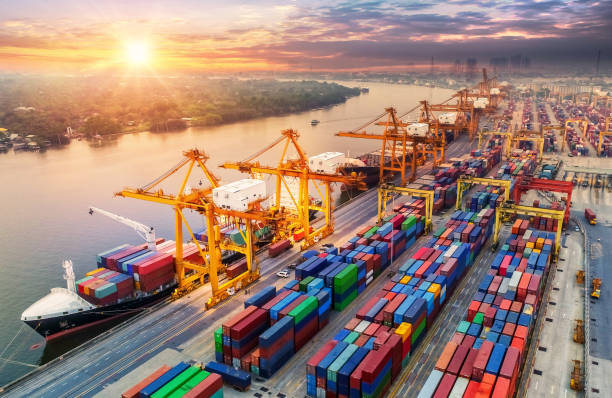Sea Freight Shipping from Guangzhou/Shenzhen to Bangalore, India: FCL and LCL Shipping Overview
1. Full Container Load (FCL) Shipping: 20FT and 40FT Containers
For large shipments, Full Container Load (FCL) is the most efficient and cost-effective option. A 20-foot (20FT) or 40-foot (40FT) container can be used depending on the volume of goods. The shipping process involves transporting goods directly from Guangzhou or Shenzhen to Bangalore Port.
FCL Shipping Details:
- Transit Time: Typically, the sea journey between China (Guangzhou or Shenzhen) and Bangalore Port takes approximately 12 days.
- Cost Structure: The cost for FCL shipping is determined by the container size (20FT or 40FT) and the weight or volume of the goods being shipped.
- Delivery Terms: Under CIF (Cost, Insurance, and Freight) terms, the seller is responsible for the cost of the goods, the freight charges to the destination port, and the insurance during transit. The buyer is responsible for the customs clearance and port charges upon arrival.
FCL shipping provides direct and secure transport of goods, reducing the risk of damage or theft that might occur in shared shipments. With an FCL, the entire container is dedicated to your goods, offering better control over the shipment.
2. Less Than Container Load (LCL) Shipping
For smaller shipments that do not fill an entire container, Less Than Container Load (LCL) is the ideal choice. LCL shipping allows multiple consignments from different customers to be consolidated into one container, sharing the cost of shipping.
LCL Shipping Details:
- Transit Time: Similar to FCL, the LCL sea freight shipping journey also takes around 12 days.
- Cost Structure: LCL shipments are charged based on the volume (cubic meters) of the cargo, which means it can be more cost-efficient for smaller shipments.
- Delivery Terms: LCL shipments can also be arranged under CIF terms, where the seller handles costs up to the destination port. The buyer is then responsible for customs clearance and final delivery.
LCL is a flexible and economical option, but it may have a slightly higher risk of damage as goods are handled multiple times and shared with other shippers. Proper packaging is essential to minimize risks.

3. Packaging of Goods for Sea Freight
Proper packaging is crucial in both FCL and LCL shipments to ensure that goods are protected during transit, especially given the rough handling and long distances associated with sea freight. Here’s a breakdown of how goods should be packaged:
Cartons: For many types of goods, sturdy, double-walled corrugated cardboard boxes are the most common packaging method. Ensure that boxes are properly sealed and clearly labeled with the consignee’s details, handling instructions, and the contents inside.
Palletizing: For larger or heavier shipments, goods are often packed onto wooden or plastic pallets. This allows for easier handling, especially in LCL shipments, and helps prevent damage during loading/unloading.
Wrapping and Padding: Fragile items should be individually wrapped in bubble wrap or foam padding, and further secured in boxes or crates. This is especially important for high-value or delicate items.
Sealing: Cargo should be securely sealed with heavy-duty stretch film, tape, or shrink wrap. This adds an extra layer of protection, particularly when goods are stacked in containers during transit.
Containerization: For FCL shipments, goods are packed directly into containers. It’s crucial to ensure that goods are evenly distributed within the container to avoid shifting during transit, which could cause damage.
Weather Protection: As sea freight involves exposure to various weather conditions, items should be protected from moisture. Waterproof wrapping or tarps may be used for added protection, particularly for textiles or machinery sensitive to water.
4. Customs and Documentation
Both FCL and LCL shipments will require proper customs documentation, including:
- Bill of Lading (B/L): A key document indicating the contract of carriage.
- Commercial Invoice: Required for customs clearance, detailing the goods and their value.
- Packing List: Important for detailing the packaging and contents of the shipment.
- Certificate of Origin: To prove the origin of the goods, especially if preferential tariffs apply.
Under CIF terms, the seller ensures that these documents are ready before the cargo arrives at Bangalore Port.



